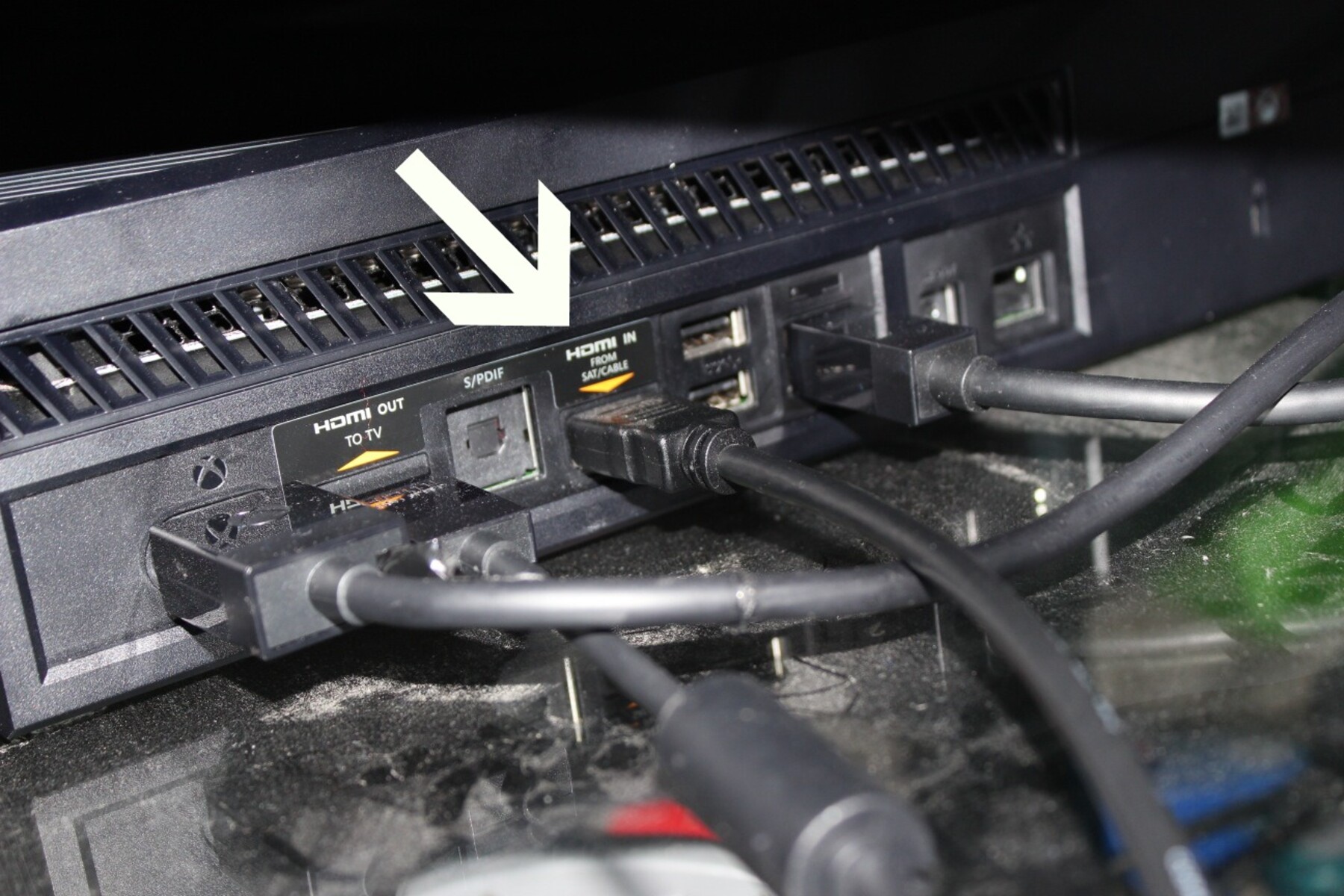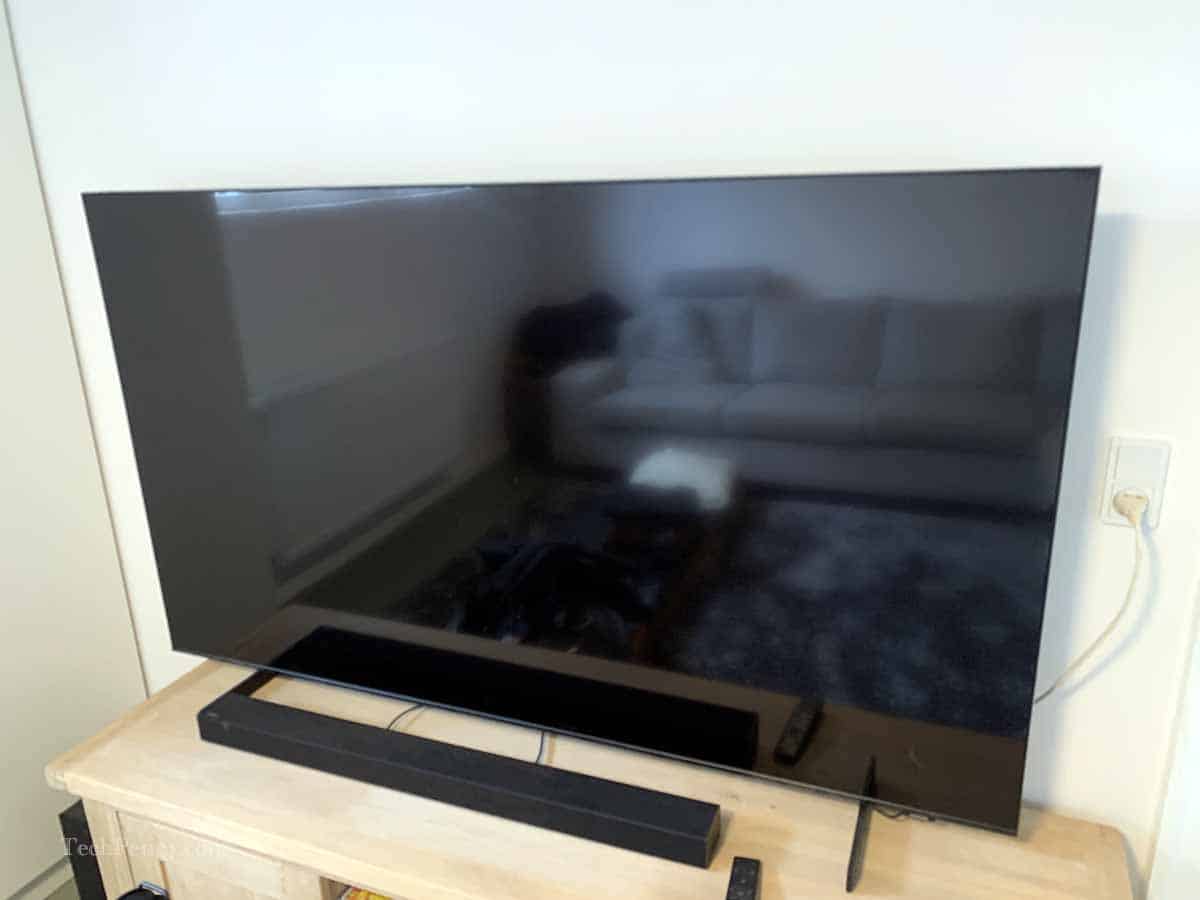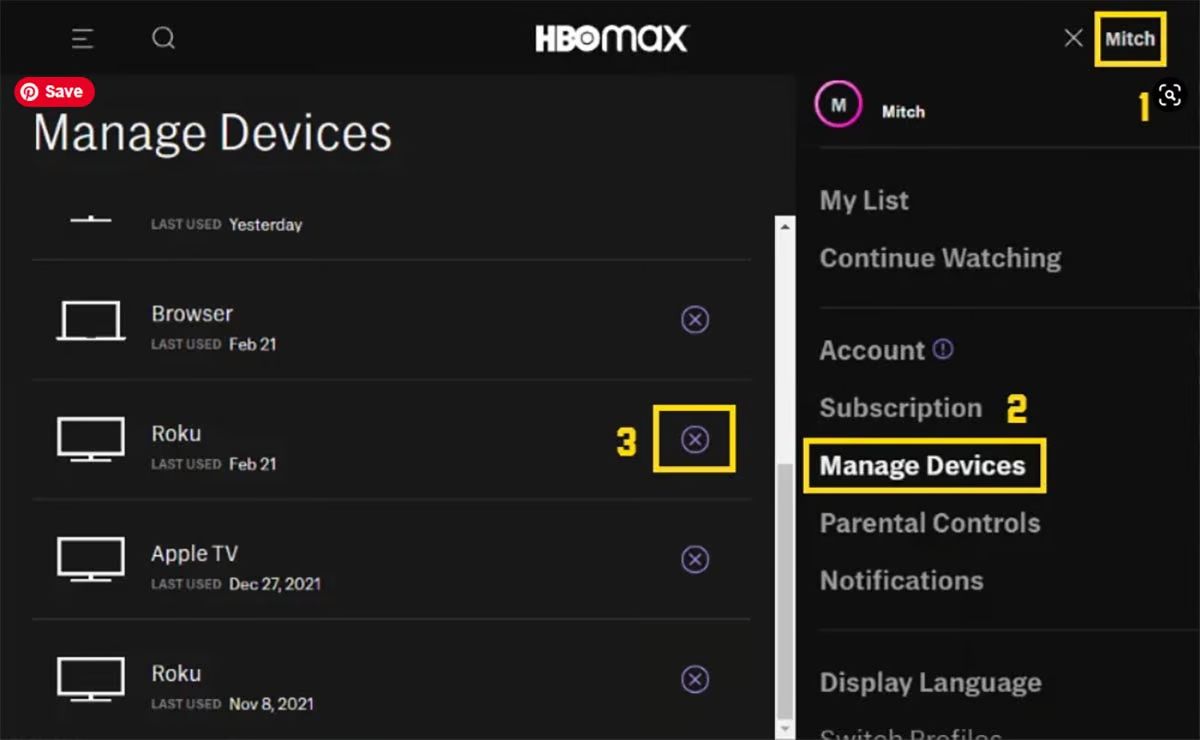Introduction
When it comes to gaming, having the right monitor can make all the difference in the world. While traditional gaming monitors are specifically designed for gaming purposes, have you ever considered using a TV as a gaming monitor? It may not be the conventional choice, but it offers a unique set of advantages that shouldn’t be overlooked. In this article, we explore the reasons why using a TV as a gaming monitor can be a cost-effective and beneficial option.
Gaming monitors often come with a hefty price tag, especially if you’re looking for one with advanced features like high refresh rates and low input lag. On the other hand, the cost of a decent TV can be quite competitive, and in some cases, even cheaper than a gaming monitor with similar specifications. This makes using a TV a more budget-friendly option, especially for casual gamers or those who don’t want to invest a significant amount of money into a dedicated gaming monitor.
Another advantage of using a TV as a gaming monitor is the larger screen size it offers. Gaming on a big screen can provide a more immersive experience, allowing you to fully immerse yourself in the game world. Whether you’re exploring vast open worlds or engaging in intense multiplayer battles, the larger screen of a TV can help you see all the details and enjoy a more captivating gaming experience. Additionally, the larger screen size can be beneficial for split-screen gaming, allowing multiple players to enjoy the game simultaneously without compromising on visibility.
Furthermore, using a TV as a gaming monitor often provides a better audio experience compared to traditional gaming monitors. TVs generally come with built-in speakers that offer more power and depth in sound. This means you can enjoy the game’s sound effects, background music, and dialogue in a more immersive and satisfying way, without the need for separate speakers or headphones.
Modern TVs also come with multiple input options, including HDMI, VGA, DisplayPort, and more. This versatility allows you to connect various gaming devices such as consoles, PCs, or even gaming laptops to the TV without any hassle. You can easily switch between different devices or gaming setups with just a few button presses, providing a seamless gaming experience without the need for additional wiring or switching devices.
Cost-effective Option
One of the major advantages of using a TV as a gaming monitor is its cost-effectiveness. Traditional gaming monitors can often be quite expensive, especially if you’re looking for high-end features like a high refresh rate or low input lag. On the other hand, TVs are generally more affordable, even when compared to mid-range gaming monitors with similar specifications.
For casual gamers or those who don’t want to invest a significant amount of money into a dedicated gaming monitor, using a TV can be a great option. It allows you to enjoy gaming on a large screen without breaking the bank. You can find a wide range of TVs in various sizes and price ranges, providing flexibility and options to fit your budget.
Moreover, purchasing a TV as a gaming monitor can also offer additional benefits beyond gaming. TVs are multi-functional devices that can be used for other entertainment purposes as well. You can enjoy streaming your favorite movies or TV shows, connect gaming consoles, or even use it as a monitor for your computer. This versatility makes a TV a cost-effective investment, as you can use it for both gaming and everyday entertainment needs.
Additionally, TVs often come with built-in speakers, eliminating the need for separate audio devices. This not only saves you money but also ensures you have a satisfactory audio experience while gaming. Gaming monitors, on the other hand, usually lack in-built speakers, requiring you to purchase separate speakers or headphones for a better audio experience.
While gaming monitors may offer specialized features like higher refresh rates or lower input lag, for many casual gamers, these features may not be essential. TVs typically have a decent refresh rate and input lag, which is sufficient for most gaming needs. Unless you’re a professional gamer or highly competitive player, a TV can provide a satisfying gaming experience without the need for expensive gaming monitor features.
All in all, using a TV as a gaming monitor is a cost-effective option that allows you to enjoy gaming on a large screen without spending a fortune. It provides a versatile and budget-friendly solution for both gaming and everyday entertainment needs. Whether you’re a casual gamer or someone on a tight budget, using a TV can be a smart choice that doesn’t compromise on the gaming experience.
Larger Screen Size
One of the standout advantages of using a TV as a gaming monitor is the larger screen size it offers. Gaming on a big screen can significantly enhance your overall gaming experience, immersing you in the game world and allowing you to appreciate the smallest details.
With a TV, you have the luxury of gaming on a larger canvas, which can bring games to life in a whole new way. Whether you’re exploring immersive open worlds, engaging in intense multiplayer battles, or enjoying cinematic storytelling, a larger screen lets you fully immerse yourself in the game’s visuals and atmosphere.
The increased screen real estate also benefits games that involve split-screen multiplayer. Rather than squinting at a smaller monitor trying to see your character or opponents, a TV allows multiple players to comfortably enjoy the game together without compromising visibility. This is particularly advantageous for games that require local multiplayer, such as racing, sports, or fighting games.
Furthermore, a larger screen size can improve your spatial awareness in certain types of games. In competitive multiplayer titles, having a wider field of view can give you an edge, allowing you to spot enemies or detect movement more easily. It can also provide a more immersive experience in first-person shooters, where the wider view can make you feel like you’re truly in the game.
When it comes to graphics, a bigger screen can showcase the details, textures, and visual effects of games more prominently. Games with stunning visuals, intricate level designs, and beautiful landscapes are best appreciated on a large display. The larger screen size enables you to see the game as the developers intended, capturing the full visual impact and enhancing your overall gaming experience.
While gaming monitors may offer high pixel density and sharper image quality due to their smaller screen sizes, the difference in visual quality may not be noticeable to the average gamer on a TV. Most modern TVs come with high-definition (HD) or even 4K resolutions, providing crisp and vibrant visuals. Additionally, many TVs also support HDR (High Dynamic Range) technology, which enhances the color contrast and brightness range for a more lifelike and dynamic display.
In summary, using a TV as a gaming monitor offers the advantage of a larger screen size, allowing for a more immersive gaming experience. The increased screen real estate enhances visual details, improves spatial awareness, and expands the enjoyment of multiplayer games. While gaming monitors may offer higher pixel density, the larger display of a TV can compensate by delivering an immersive and visually captivating gaming experience.
Better Audio Experience
When it comes to gaming, audio plays a crucial role in creating an immersive and engaging experience. Using a TV as a gaming monitor can provide a better audio experience compared to traditional gaming monitors.
Most TVs come equipped with built-in speakers that offer more power and depth in sound compared to the speakers found in gaming monitors. This means that you can enjoy the sound effects, background music, and dialogue of your favorite games in a more immersive and satisfying way without the need for separate speakers or headphones.
The built-in speakers of a TV can deliver a more room-filling audio experience, which enhances the overall immersion of your gameplay. Whether it’s the thumping bass in action-packed scenes or the subtle ambient sounds that create a realistic environment, the improved audio quality adds an extra layer of depth to your gaming experience.
Furthermore, using a TV as a gaming monitor allows you to take advantage of advanced audio technologies that are often built into modern televisions. Many TVs support audio formats like Dolby Atmos or DTS:X, which provide a three-dimensional sound experience. This technology can simulate sounds coming from different directions and heights, making you feel like you’re truly immersed in the game’s world.
In addition to enhanced sound quality, using a TV as a gaming monitor also offers the convenience of having audio controls easily accessible. Most TVs have dedicated volume buttons or remote control features that allow you to adjust the audio settings directly from your gaming position. This saves you the hassle of reaching for separate volume controls or adjusting settings through onscreen menus.
Another advantage of utilizing the TV’s audio capabilities is the ability to enjoy gaming without the need for additional equipment. Gaming monitors typically lack in-built speakers and require the use of separate speakers or headphones for better audio quality. By using a TV, you eliminate the need for these additional audio devices, streamlining your gaming setup and reducing clutter.
While it’s worth noting that dedicated gaming headsets or high-quality speakers can offer even more precise audio positioning and clarity, the built-in speakers of a TV can still provide an enjoyable and immersive gaming audio experience for most casual gamers. So, if you prefer a hassle-free gaming setup with good audio quality, using a TV as a gaming monitor can be a great option.
To sum up, utilizing a TV as a gaming monitor offers a better audio experience due to its built-in speakers and enhanced audio technologies. You can enjoy more immersive sound, convenient audio controls, and the elimination of the need for additional audio devices. While specialized gaming audio equipment may provide higher precision and clarity, the built-in speakers of a TV offer a satisfying audio experience for most casual gamers.
Multiple Input Options
Using a TV as a gaming monitor provides the advantage of having multiple input options, offering versatility and convenience in connecting various gaming devices.
Modern TVs come equipped with a range of input ports, including HDMI, VGA, DisplayPort, and more. This wide array of connectivity options allows you to easily connect different gaming devices such as consoles, PCs, or even gaming laptops to your TV without any hassle.
One of the most commonly used input options for gaming is HDMI. HDMI ports are found on almost all TVs and are compatible with most gaming devices. This means you can effortlessly connect your gaming console or PC to your TV using HDMI cables, enabling you to enjoy high-definition gaming on the big screen.
VGA and DisplayPort are additional input options offered by many TVs. VGA is a connection standard commonly used for older gaming devices or computers, while DisplayPort provides a high-quality digital connection for newer devices. Having these options available ensures compatibility with a wide range of gaming devices, making it easier for you to connect your preferred gaming equipment to the TV.
In addition to traditional gaming devices, smart TVs also offer the ability to connect to the internet, allowing you to access cloud gaming services or stream games directly from the TV itself. Many smart TVs come with built-in app stores or support popular gaming platforms, such as Google Stadia or Nvidia GeForce Now, which gives you the flexibility to play a variety of games without the need for dedicated gaming hardware.
Using a TV as a gaming monitor also simplifies the process of switching between different gaming setups. With multiple input options, all you have to do is switch the input source on your TV to connect to a different gaming device. This eliminates the need for complex wiring or constantly having to unplug and plug in different devices, providing a more seamless and convenient gaming experience.
Furthermore, many modern TVs also come with additional features that enhance the gaming experience. Some TVs offer specialized gaming modes or settings that optimize the display and reduce input lag for smoother gameplay. These gaming-oriented features, combined with the multiple input options, provide a customizable gaming setup to suit your preferences and device compatibility.
In summary, using a TV as a gaming monitor provides the advantage of multiple input options, making it easy to connect various gaming devices. Whether it’s consoles, PCs, or even cloud gaming platforms, you can enjoy the flexibility and convenience of connecting your preferred gaming equipment to the TV. Additionally, the ability to switch between different setups with ease and the availability of gaming-specific features further enhance the gaming experience when using a TV as a monitor.
Versatility and Multi-functionality
Using a TV as a gaming monitor offers versatility and multi-functionality, allowing you to enjoy a wide range of entertainment options beyond gaming.
Unlike dedicated gaming monitors, TVs are designed to be multi-functional devices that cater to various forms of entertainment. This means that when you’re not gaming, you can make use of your TV for other purposes such as streaming movies or TV shows, browsing the internet, or even using it as a regular television.
Streaming services have become increasingly popular in recent years, and many smart TVs come with built-in apps for popular platforms like Netflix, Hulu, or Amazon Prime Video. With a TV as a gaming monitor, you can seamlessly switch from gaming to streaming your favorite movies or TV shows without the need for additional devices.
In addition to streaming, having a TV as a gaming monitor allows you to connect other entertainment devices such as Blu-ray players, media players, or gaming consoles. This flexibility enables you to enjoy a wide variety of content on the big screen, enhancing your overall entertainment experience.
Furthermore, using a TV as a gaming monitor can also be advantageous for productivity purposes. If you work from home or need to use your computer for tasks other than gaming, you can connect your PC or laptop to the TV and utilize it as a larger display. This can be especially beneficial for activities that require more screen real estate, such as video editing, graphic design, or multitasking.
Smart TVs nowadays offer web browsing capabilities, allowing you to surf the internet directly from the comfort of your couch. This multi-functionality lets you access websites, social media platforms, and online content without the need for a separate computer or mobile device. It can be incredibly convenient for casual web browsing, checking emails, or even streaming online content that may not be available through dedicated apps.
Moreover, many modern TVs come with additional features such as voice control, wireless connectivity, and built-in applications that further enhance the multi-functionality of the device. These features allow you to interact with your TV in different ways, create a customized entertainment experience, and seamlessly integrate it into your smart home setup.
In summary, using a TV as a gaming monitor provides versatility and multi-functionality that goes beyond gaming. The ability to switch from gaming to streaming, connect various entertainment devices, and use the TV for productivity or web browsing makes it a versatile entertainment hub. Whether it’s enjoying your favorite movies, working on important tasks, or browsing the internet, a TV as a gaming monitor offers a range of entertainment options to cater to your diverse needs.
Enhanced Immersion and Graphic Quality
Using a TV as a gaming monitor can significantly enhance your gaming experience by providing a larger display and improved graphic quality, resulting in heightened immersion.
The larger screen size of a TV compared to a traditional gaming monitor allows for a more immersive gaming experience. Whether you’re exploring vast open worlds, engaging in fast-paced action, or delving into captivating narratives, a bigger display can draw you deeper into the game’s world. The increased screen real estate envelops your field of vision, bringing the game’s visuals to life and allowing you to fully appreciate the intricate details and stunning landscapes.
In addition to the larger size, many modern TVs offer high-definition (HD) or even 4K resolutions. This means you can enjoy games with crisp details, vibrant colors, and sharp image quality. The higher pixel density of these resolutions ensures that you can see every nuance and visual effect in the game, creating a more visually immersive experience.
Moreover, some modern TVs also support High Dynamic Range (HDR) technology, which further enhances the graphic quality. HDR expands the range of contrast and color, resulting in more lifelike and dynamic visuals. It allows for deeper blacks, brighter highlights, and a wider color spectrum, bringing a new level of realism to your gaming experience.
When playing games with stunning graphics and intricate artwork, a TV can showcase the intricate details in a way that a smaller gaming monitor might not. You can immerse yourself in the intricate textures, impressive lighting effects, and meticulous character designs that developers have carefully crafted.
The improved graphic quality and larger display of a TV can also have practical benefits for gameplay. A larger screen can provide a wider field of view, allowing you to see more of the game world at once. This can be particularly advantageous in multiplayer games, where having a larger perspective can help you navigate the environment, spot enemies, or coordinate with teammates more effectively.
Furthermore, some TVs come with gaming-specific features or settings that optimize the display for gaming purposes. These features may include gaming modes that reduce input lag or motion blur, as well as options to enhance specific visual aspects like color accuracy or image clarity. Such features can further enhance the graphic quality and contribute to an overall more immersive gaming experience.
In summary, using a TV as a gaming monitor enables enhanced immersion and improved graphic quality. The bigger display size, high resolutions, and support for HDR technology allow you to fully appreciate the visual aspects of your favorite games. Whether it’s the stunning details, vibrant colors, or wider field of view, a TV as a gaming monitor can elevate your gaming experience and transport you into the virtual worlds with greater immersion.
TV Features and Smart Functionality
Using a TV as a gaming monitor goes beyond the gaming experience itself. TVs often come with a wide range of features and smart functionality that can enhance your overall entertainment setup.
Modern smart TVs offer a host of features that can make your gaming and entertainment experience more convenient and enjoyable. With built-in Wi-Fi connectivity, you can easily connect your TV to the internet, opening up a world of possibilities for streaming, online gaming, and accessing a variety of content.
Many smart TVs come with built-in app stores or pre-installed applications, allowing you to access popular streaming platforms like Netflix, Amazon Prime, Hulu, and more. This means that, in addition to gaming, you have instant access to a vast library of movies, TV shows, and other online content, all through the same device.
Furthermore, smart TVs often support popular gaming platforms such as Google Stadia, Nvidia GeForce Now, or Xbox Cloud Gaming (formerly known as Project xCloud). This smart functionality enables you to stream games directly to your TV without the need for a dedicated gaming console, offering a convenient way to enjoy a wide selection of games.
In addition to gaming and streaming capabilities, smart TVs offer other convenient features such as voice control. With voice command functionalities like Amazon Alexa or Google Assistant, you can easily navigate through menus, launch applications, adjust settings, and control various aspects of your TV, all without even lifting a remote.
Smart TVs also come with multiple HDMI ports, USB ports, and other connectivity options to accommodate various devices. This makes it easy to connect gaming consoles, Blu-ray players, soundbars, and other peripherals to your TV, creating a seamless and centralized entertainment setup.
Additionally, some smart TVs even offer screen mirroring capabilities, enabling you to mirror the display of your smartphone, tablet, or computer on the TV screen. This can be useful for sharing photos, presentations, or playing mobile games on a larger display.
Moreover, smart TVs often receive software updates, ensuring that you have access to the latest features, improvements, and bug fixes. This means that your TV can evolve over time, offering enhanced functionality and staying up to date with the latest technological advancements.
Overall, utilizing a TV as a gaming monitor provides access to a range of TV features and smart functionality that enhance your entertainment setup. Whether it’s streaming, accessing a variety of content, voice control, or connectivity options, smart TVs offer a versatile and convenient solution for gaming and all your entertainment needs.
Accessibility and User-Friendly Interface
Using a TV as a gaming monitor offers accessibility and a user-friendly interface that makes gaming and entertainment more enjoyable and convenient.
One of the advantages of using a TV is the accessibility it provides. TVs are designed with user-friendly interfaces that are intuitive and easy to navigate, making it simple for users of all ages and technical expertise to operate. With a TV, you can easily adjust settings, switch inputs, and access various features with just a few clicks of a remote or on-screen controls.
TVs also offer larger and more readable text on the screen compared to smaller gaming monitors. This is especially beneficial for gamers who have vision impairments or prefer a more comfortable viewing experience. The larger on-screen text and clear user interface make it easier to navigate menus, read notifications, and access settings without straining your eyes.
Furthermore, using a TV as a gaming monitor allows for a more relaxed and comfortable gaming experience. TVs are designed with the viewing distance in mind, ensuring that you can comfortably sit back and enjoy your game from a distance. This eliminates the need to sit close to the screen and reduces the strain on your neck and eyes during extended gaming sessions.
Many modern TVs also come with remote controls that have dedicated buttons for popular applications and functions. This eliminates the need to navigate through complex menus or remember shortcut keys. With a simple press of a button, you can launch your favorite streaming app or access specific TV features, enhancing the convenience and ease of use.
Accessibility is not limited to the interface and navigation but also extends to connectivity options. TVs typically feature multiple HDMI ports, USB ports, and other input/output options, allowing you to easily connect your gaming devices, audio systems, and other peripherals. This flexibility provides a seamless and hassle-free gaming setup, accommodating a wide range of devices and accessories.
In addition to the physical accessibility, smart TVs also offer accessibility features for users with disabilities. These features can include closed captioning for the hearing impaired, voice-guided navigation, and customizable display settings for individuals with visual impairments.
Overall, using a TV as a gaming monitor offers a user-friendly interface and accessibility features that enhance the gaming and entertainment experience. The intuitive design, readable text, comfortable viewing distance, and dedicated remote buttons contribute to a seamless and enjoyable gaming experience for users of all skill levels and abilities.
Final Thoughts
Using a TV as a gaming monitor can be a cost-effective and beneficial option for gamers looking to enhance their gaming experience. The larger screen size, better audio experience, multiple input options, versatility, and enhanced graphics all contribute to a more immersive and enjoyable gaming experience.
One of the standout advantages of using a TV is its cost-effectiveness. TVs are generally more affordable than dedicated gaming monitors with similar specifications, making them a budget-friendly option for casual gamers or those who don’t want to invest a significant amount of money into a monitor.
The larger screen size of a TV provides a more immersive gaming experience, allowing gamers to fully immerse themselves in the game world and appreciate the intricate details. It’s particularly advantageous for split-screen multiplayer games, providing better visibility for multiple players.
Additionally, using a TV as a gaming monitor often provides a better audio experience with its built-in speakers, eliminating the need for separate audio devices. The power and depth of the speakers in TVs can enhance the sound effects, background music, and dialogue, adding an extra layer of immersion to the gaming experience.
The multiple input options available in TVs offer versatility and convenience, allowing you to connect various gaming devices without hassle and switch between gaming setups effortlessly. This flexibility ensures compatibility with a wide range of gaming devices and peripherals.
Moreover, TVs offer versatility and multi-functionality beyond gaming. With smart functionality, you can stream movies, browse the internet, or even use the TV as a regular television. The additional features, such as voice control and screen mirroring capabilities, further enhance the overall entertainment setup.
Lastly, the enhanced immersion and graphic quality of a TV as a gaming monitor can elevate the gaming experience. The larger screen size, higher resolutions, and support for technologies like HDR result in stunning visuals and a more immersive gameplay environment.
While there are some considerations to keep in mind, such as potential input lag and the need for space to accommodate a larger screen, using a TV as a gaming monitor offers numerous benefits for gamers who prioritize cost-effectiveness, enhanced visuals, and a versatile entertainment setup.
Ultimately, the decision to use a TV as a gaming monitor depends on personal preferences, budget, and specific gaming needs. It’s important to carefully consider the features, size, and specifications of the TV to ensure it aligns with your gaming requirements and provides a satisfying gaming experience. So, why not explore the option of using a TV as a gaming monitor and discover a new level of immersion and enjoyment in your gaming adventures?
























